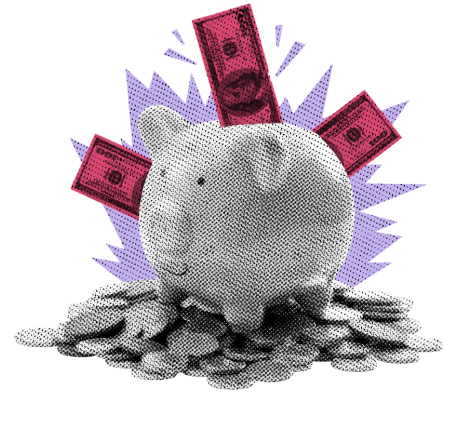
Stocks inched into a mixed close on Friday as right-swinging Europe exposed old Brexit nerves – is Frexit next? Markets are getting prepared for a summer of wordy FOMC bankers talking their talk right up to a first rate cut.
A sentimental journey. Yes, I admit it. I am obsessed with consumers and their consuming ways. Why? [this is where if I were a rockstar I would point the microphone out to the audience.] You would collectively say “because consumption makes up 2/3 of GDP!” If consumers lose interest in doing their thing, the economy will follow… and so would your stocks, because NO COMPANY IS INSULATED FROM AN ECONOMIC DOWNTURN. That is why everyone is so obsessed with those three letters “G,” “D,” and “P.” Ok, so now that we got that out of the way. What do you suppose we should focus on to determine how well the economy might perform for the next, say, 4 quarters? Come on, this should be easy by now. Personal Consumption, employment, and Personal Income, right? That is right, but what even precedes Consumption? Wait for it… consumer sentiment.
If you were worried about losing your job or concerned that the economy was on the brink of disaster, would you plan a 2-week vacation, buy a new car, or buy that shiny record player to play the 10 vinyl records you have kept in your cellar since college? NO, of course not! You may even start adding pasta back into your dinner rotation to cut back on pricey meals. Oh, and ordering in with DoorDash? No way, not if you were nervous about your income or declining economic conditions.
University of Michigan started thinking about this in the 1940’s and 1950’s, specifically Dr. George Katona, a Psychologist who worked there. He devised the, I suppose, aptly named University of Michigan Sentiment Index. Formalized in the 1960s, researchers poll 500 households every month with some 50 questions regarding their thoughts on their current situation and their expectations about the future. Questions include things like “Do you think now is a good or bad time to buy major household items such as furniture, refrigerators, stoves, televisions, and things like that,” or “during the next year, do you expect your (family) income to increase more than prices will go up, about the same, or less than prices will go up?” You can probably see that by tallying up answers to questions like these from 500 households, we can get a good understanding of what the population thinks, assuming that the sample is random 😉. My academic friends would say that this sample size of 500 would have a Z-score 2.24 which would get us a 97.5% confidence level with a 5% margin of error… which is pretty darn good.
So, if I were to ask you if you would like to know with 97.5% confidence how all US consumers felt about the economy and consumption, wouldn’t you want to know? OF COURSE, you would. So here it is, right here, in beautiful graphic form, thanks to my friends at Bloomberg.

Feel free to ponder this chart deeply, but I am going to point out the highlights, out of respect for your time. First, notice that the overall trend of sentiment from prior to the pandemic to today is negative, despite a more recent positive trend which appears to have peaked earlier this year. Second, all sub-categories are lower since 2019, but I highlight the light-blue-colored bars that represent Current Personal Finances which fell from 20.67 to 12.094. If indeed, the index did peak earlier this year and the index drops further into a 4th consecutive decline, this may be an early warning sign of trouble ahead. By the way, the Fed DOES pay close attention to this number which is released early in the month and then revised by month end. The question is, how nervous do consumers have to get before the Fed gets nervous and finally cuts rates?
FRIDAY’S MARKETS

NEXT UP
- Empire Manufacturing (June) may have improved to -11.3 from -15.6.
- Fed speakers today include Williams, Harker, and Cook.
- Later this week we will get Retail Sales, Industrial Productions, housing numbers, flash PMIs, and Leading Economic Index. Download the attached economic calendar for times and details… I highlight the things I think you should pay attention to 😉.
.png)

